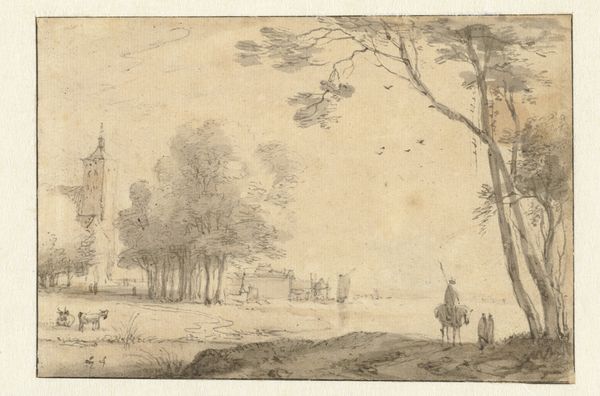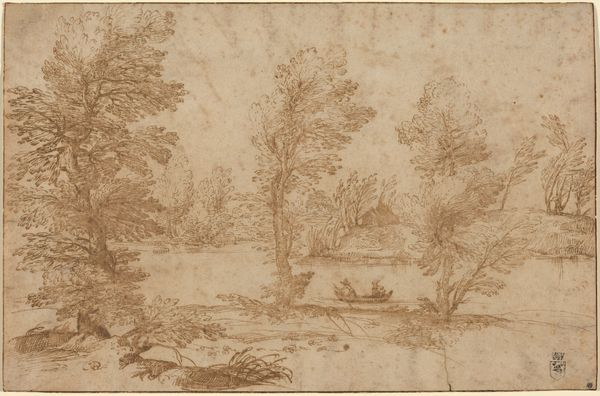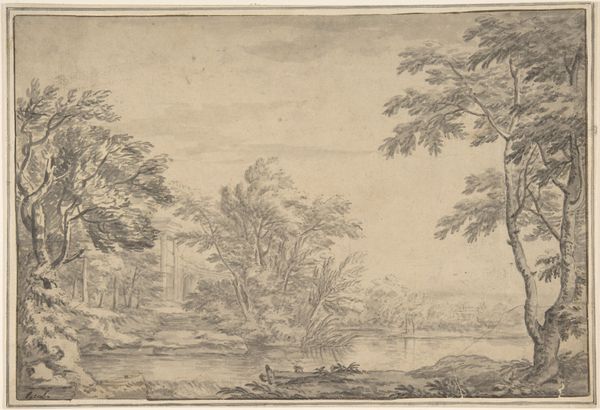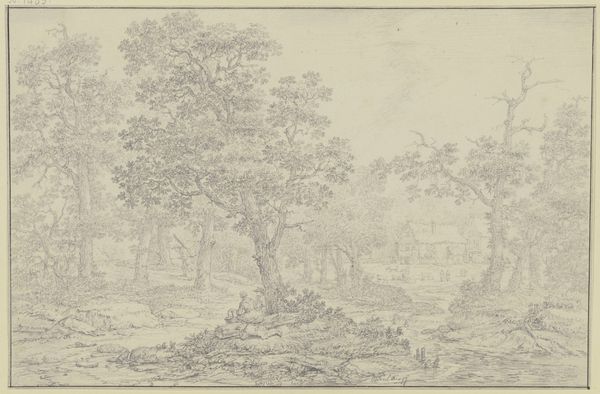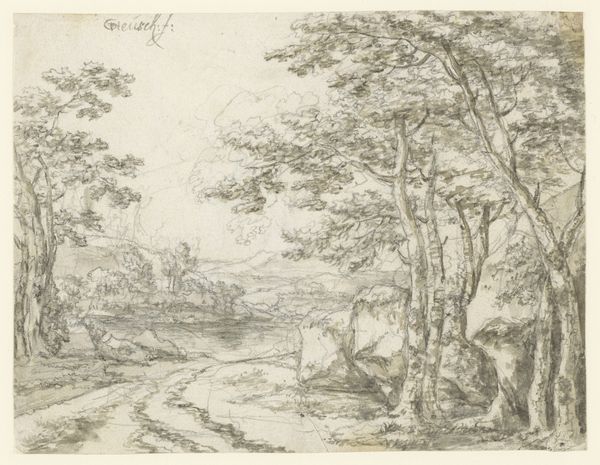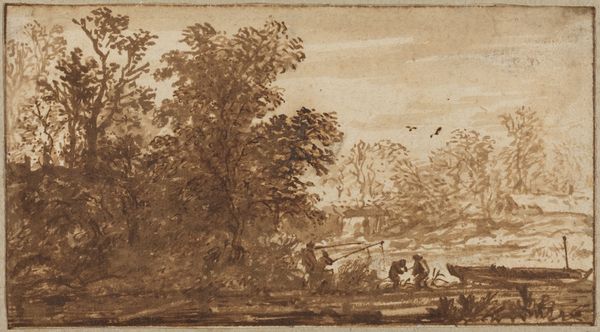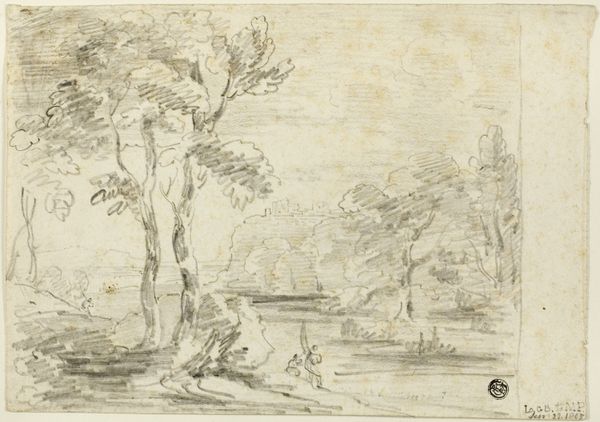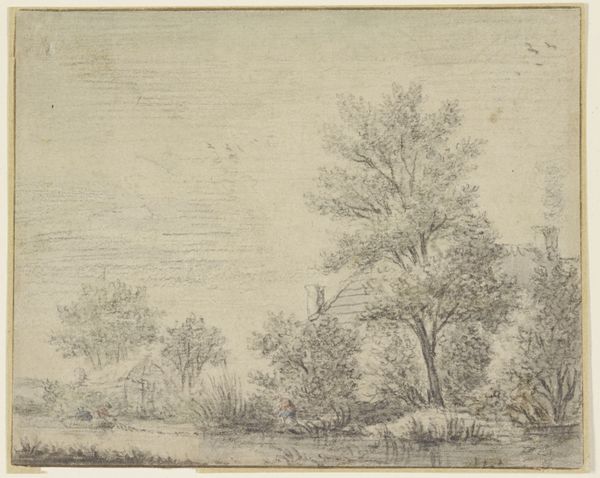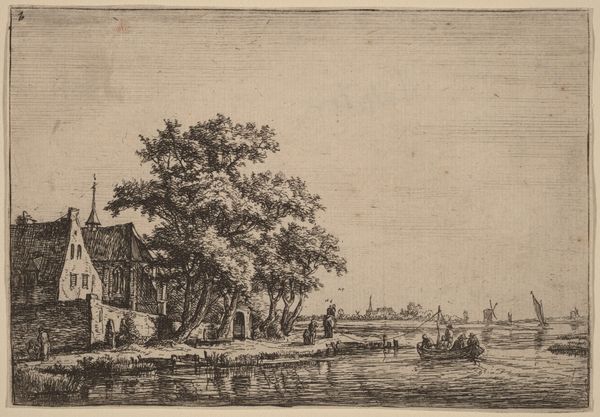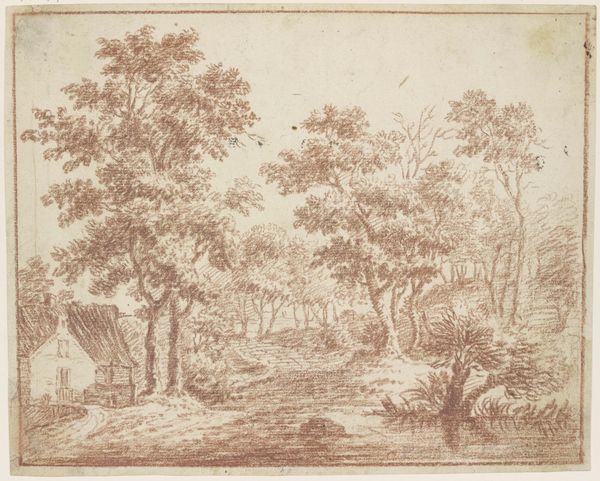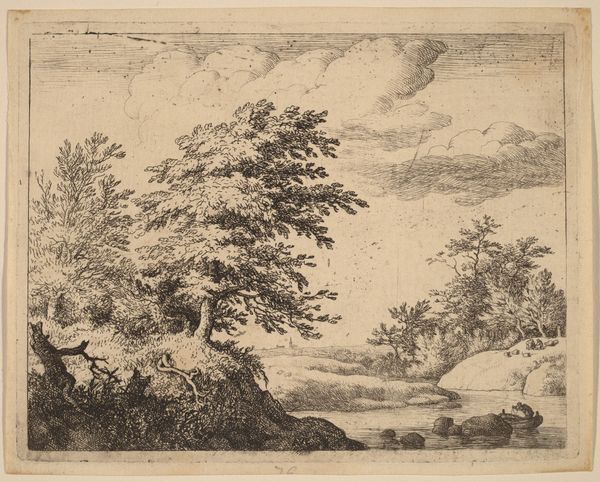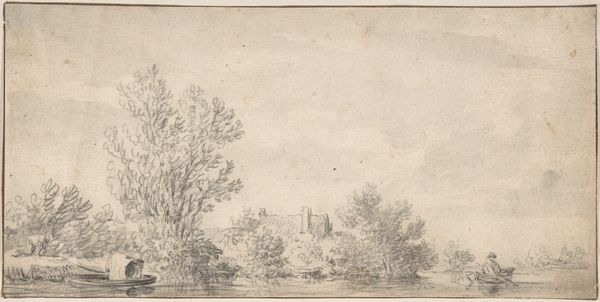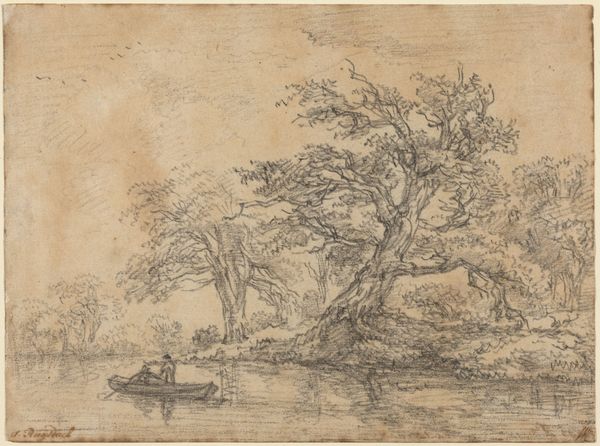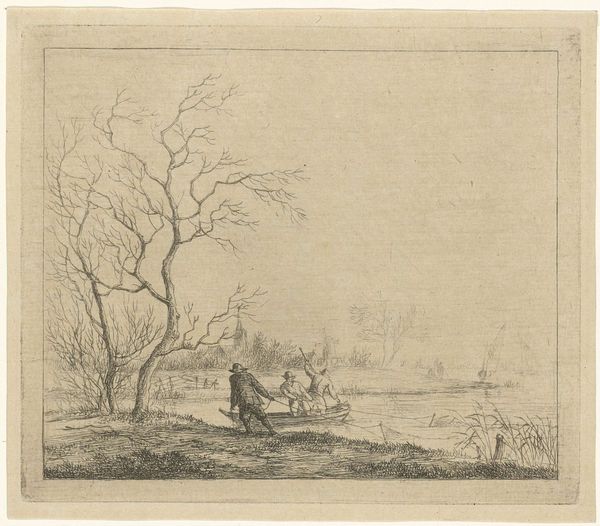
Soldiers Exercising Horses Near River 1785
0:00
0:00
drawing, print, paper, ink, ink-drawings, graphite, pen
#
architectural sketch
#
landscape illustration sketch
#
drawing
# print
#
pencil sketch
#
incomplete sketchy
#
etching
#
possibly oil pastel
#
paper
#
ink
#
ink-drawings
#
france
#
water
#
graphite
#
pen
#
watercolour bleed
#
watercolour illustration
#
watercolor
#
environment sketch
Dimensions: 217 × 301 mm
Copyright: Public Domain
Editor: Here we have "Soldiers Exercising Horses Near River" created around 1785 by Jacques Francois Joseph Swebach des Fontaines, seemingly a drawing using ink and graphite on paper. It has a subdued, almost dreamlike quality. What social dynamics might have influenced this artwork, with its depictions of soldiers and horses in what looks like a very gentle manner? Curator: That's an insightful observation. Consider that 1785 was just before the French Revolution. While seemingly benign, scenes like these played into existing power structures. The military, even at rest, symbolized the authority of the state and the aristocratic class that controlled it. How does the idealized rural setting contribute to this? Editor: I suppose it normalizes the presence of military power within everyday life. By placing these soldiers in a pastoral scene, the drawing presents their authority as part of the natural order, not as something imposed. Is it fair to view such imagery as propaganda then? Curator: Propaganda may be a strong word, but it certainly reflects the prevailing ideology. Images like this were frequently commissioned and displayed, reinforcing the existing social hierarchy. The composition itself, with the soldiers prominently placed in the foreground, guides the viewer's eye and reinforces this message. But it also tells us something about the artistic expectations and training of the period, don’t you think? Editor: You mean the focus on technique and form over explicit narrative? I see what you mean. So the piece, while aesthetically pleasing, functions on multiple levels - social, historical, and even institutional by reflecting the expectations of artistic production. Curator: Precisely. Analyzing art this way helps us understand how even seemingly innocent depictions contribute to larger cultural and political conversations. Editor: That’s broadened my understanding of how even subtle artistic choices reflect the larger social and political landscape of the time. I wouldn’t have picked up on the subtleties had it not been for your explanation. Curator: And I now think it’s worthwhile considering whether our modern framing, with museums and galleries as arbiters, shifts the implications of the work in entirely new ways. Thanks for this thoughtful exchange.
Comments
No comments
Be the first to comment and join the conversation on the ultimate creative platform.
